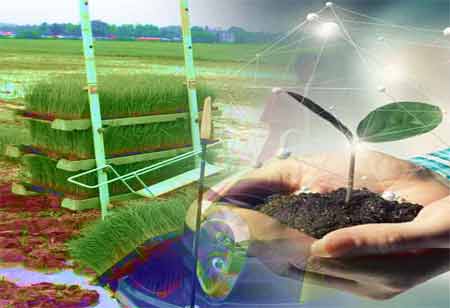Thank you for Subscribing to Agri Business Review Weekly Brief
Consumer Awareness and Acceptance of Bio-Stimulants in European Agriculture
In Europe, the agricultural sector is increasingly prioritising the integration of biostimulants. These organic compounds play a pivotal role in enhancing agricultural yields and fortifying plant resistance, all without directly

By
Agri Business Review | Friday, January 12, 2024
Stay ahead of the industry with exclusive feature stories on the top companies, expert insights and the latest news delivered straight to your inbox. Subscribe today.
The European agricultural sector is incorporating biostimulants to enhance yields and plant resistance, with Southern Europe showing higher adoption rates due to established practices and early exposure.
FREMONT, CA: In Europe, the agricultural sector is increasingly prioritising the integration of biostimulants. These organic compounds play a pivotal role in enhancing agricultural yields and fortifying plant resistance, all without directly impacting nutrient intake. However, despite the considerable potential inherent in biostimulants, there exists a notable variance in consumer adoption and comprehension across the continent.
Awareness and Acceptance Landscape
Across various European countries, there exists notable divergence in consumer awareness regarding bio-stimulants. Southern European nations, especially Italy and Spain, display heightened adoption rates, attributed to well-established agricultural practices and early exposure to these innovative products. In contrast, Northern Europe demonstrates comparatively lower awareness, likely stemming from a predominant reliance on traditional fertilisers and stringent regulatory frameworks.
Key Influencing Factors: Several determinants contribute to the acceptance levels among consumers:
Environmental Considerations: The appeal of bio-stimulants lies in their sustainable and natural attributes, aligning with the preferences of consumers committed to environmentally friendly agricultural practices.
Perceived Benefits: Positive perceptions are influenced by tangible evidence showcasing enhanced crop yields and stress tolerance resulting from the application of bio-stimulants.
Knowledge Gaps: Scepticism and hesitation among consumers often arise from a lack of awareness regarding the benefits associated with bio-stimulants, highlighting the importance of addressing knowledge gaps.
Regulatory Framework: Market penetration may face hindrances in regions with stringent regulations, creating uncertainty among consumers and impacting the broader adoption of bio-stimulants.
Latest Developments
Policy and Regulations: The European Commission's Fertilising Products Regulation (FPR), has established a cohesive framework for the regulation of bio-stimulants across the European Union. The implementation of this regulation is anticipated to enhance market transparency and instill greater confidence among consumers.
Research and Innovation: Continuous research efforts are expanding our understanding of the efficacy and applications of bio-stimulants. Concurrently, advancements in formulation and delivery technologies are driving the development of innovative products and fostering diversification within the market.
Consumer Engagement: Building awareness and trust among consumers is pivotal, and initiatives such as educational campaigns and farm demonstrations play a crucial role in achieving this. Collaborations between the industry and research institutions, as well as farmer organisations, are essential for promoting knowledge sharing and the adoption of best practices.
Within the European context, biostimulants emerge as a promising avenue for fostering productivity and sustainability within the agricultural sector. However, the widespread acceptance among consumers hinges upon the meticulous addressing of information gaps, the establishment of credibility, and the substantiation of their efficacy. By proactively addressing these challenges and capitalising on emerging opportunities, the European biostimulant market holds the potential to burgeon, thereby making significant strides toward a more resilient and sustainable agricultural future.





